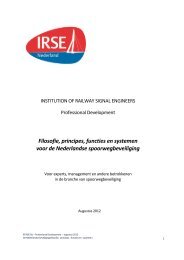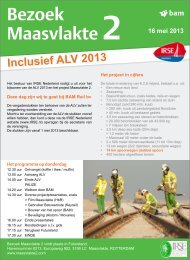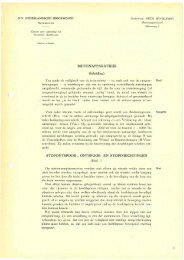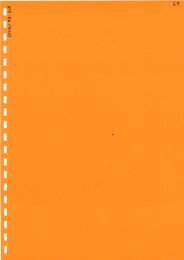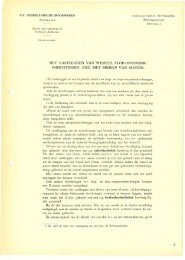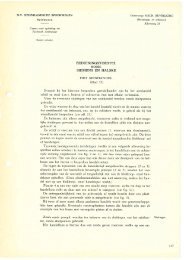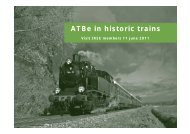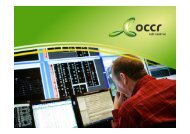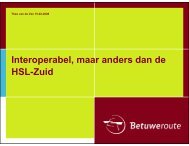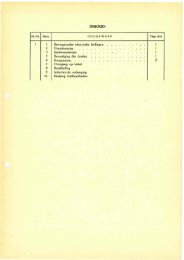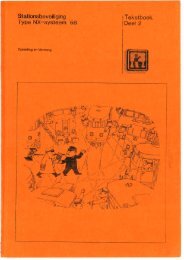Transponder systems can be active or passive, the latter employing remotepowering of the transponder by the vehicle. Transponders can also be fixed in theirmessage content, or contain switcheable messages that can be selected through aconnection to a signal, interlocking etc. Transponders that are both passive <strong>and</strong> fixedhave the advantage of requiring no trackside cabling at all. Selectivity of a balise’smessage to the direction of travel of a train can be achieved physically, e.g. byoffsetting them from the centre of the rails, or through coding of messages in two ormore balises in a group etc. The latter is also used to extend the amount of data thatcan be transmitted. Balise messages can contain pointers, identifying the next balisea train should encounter, depending on its route if needed, to ensure an alarm can beraised if the next balise is missed, misread or simply absent.Loop systems always are active, that means that they require a trackside powerfeed.The system installed in the Netherl<strong>and</strong>s as ATBNG, Belgium (TBL) <strong>and</strong> the UK onthe GWML is the TBL system, which uses a combination of an active transponders<strong>and</strong> loops. Both parts are fed with the identical information, but at differenttransmission speeds. The transponder transmits at a bit rate of 25 kbit per second,the loop with approximately 1 kbit per second. Transponder <strong>and</strong> loop are transmittingat a carrier frequency of 100 kHz. In this system transponders are located at signals,whereas the loops are used to transmit semi-<strong>continuous</strong> “infill” information in rear of asignal where needed. The function of the infill information is to allow a speedsupervision curve to be updated as soon as a signal aspect improves, rather thanforcing the train to continue braking until it reaches the transponders at the location ofthe next signal.The SELCAB system is based on loop transmission o<strong>nl</strong>y. It will be described inmore detail later on.Future <strong>intermittent</strong> systems could possibly be based on microwave transmission.One example is the AMTECH system, which was st<strong>and</strong>ardised by UIC for wagonidentification application (AVI). This system could be used in a reverse manner, thatmeans the transponder is mounted on trackside <strong>and</strong> the reader on train-borne for an<strong>intermittent</strong> data transmission system. This AMTECH transponder is based on thebackscatter principle <strong>and</strong> is operating at a frequency of 2.4 to 2.5 GHz. Thetransmission speed is in the range of 150 kbit per second. The microwave technologyequipment is small in size <strong>and</strong> low in cost, but is sensitive to transmission problemswhen debris, salt water etc. is present in the transmission path. Although it wasconsidered to be a promising technology especially where fixed information has to betransmitted, these transmission problems prevented its selection as the transmissionmedium for Eurobalise. At present, the application of this system as transponder islimited to Metros (London <strong>and</strong> Madrid).Continuous Systems.The traditional method for data transmission in <strong>continuous</strong> systems is to usecoded track circuits. In the first incarnations of this family of <strong>ATP</strong> systems theconventional low frequency track circuits used throughout the world are used as thecarrier for track to train transmission. The detection current flowing through the railsas soon as a section is occupied, is used as the carrier for the <strong>ATP</strong>/ATC codes <strong>and</strong> is“amplitude modulated” by periodically switching it on <strong>and</strong> off with a frequency of afew Hertz, indicating the speed code. The carrier frequency itself can be 50 or 60 Hzdepending on the mains frequency of the country, or 75 Hz as in the Dutch firstgeneration ATB system, chosen to avoid interference from the public grid. Theencoding of the speed codes on trackside <strong>and</strong> decoding on the trainborne reception15
end was traditionally done means of tuned mechanical relays. The supervised speeddepends on the speed code, i.e. the modulation frequency at which the track circuitcurrent is switched on <strong>and</strong> off. These devices are simple, robust <strong>and</strong> used to be costeffective, as they have very low numbers of parts. There are also certaindisadvantages for this type of <strong>continuous</strong> <strong>ATP</strong>/ATC system namely:• The train with the worst braking characteristics defines the braking profile, faster trains withbetter brakes have to brake early.• The brake supervision is very coarse, due to the small amount of sped codes available, <strong>and</strong>usually a long overlap has to be provided (typically one block section).• The train always has to move from receiver to transmitter of the track circuit, bi-directionalrunning requires a switchover of transmitter <strong>and</strong> receiver.• High return currents <strong>and</strong> / or harmonics etc. generated by modern traction systems <strong>and</strong> allsorts of disruption in the “code transmission, e.g. at block joints, special trackwork etc. cancause corruption of the information as these systems do not employ any for of data protectionor redundancy.In more recent systems, the same principle is used, but upgraded to increase theamount of information transmitted. In the Italian BACC system, a second carrier witha higher frequency is used to transmit additional information for high speed trains.The French TVM 300 <strong>and</strong> 430 systems use jointless track circuits <strong>and</strong> moreadvanced frequency modulation to transmit the information from track to train.TVM 430 layoutAll <strong>continuous</strong> systems described above transmit permissible maximum speedsto the train. The braking curve is based on one or two typical train types. Thesesystems were developed for lines with one or two types of trains o<strong>nl</strong>y. Mixed trafficalways results in a non-optimal use of the line capacity.The German LZB system uses bi-directional data transmission through cableloops laid out between the rails. The system was specified by UIC <strong>and</strong> operates at acarrier frequency of 36 kHz to the trains <strong>and</strong> 56 kHz from the trains to the tracksideequipment. The data speeds are 1200 bit per second <strong>and</strong> 600 bit per second16





